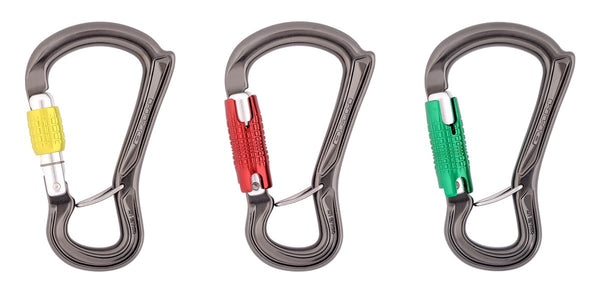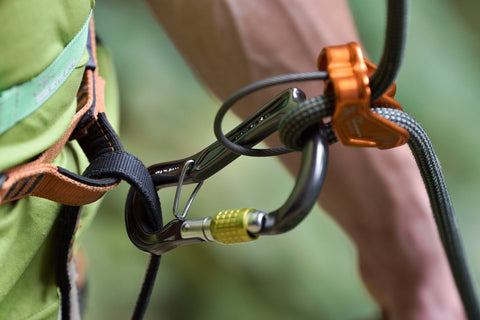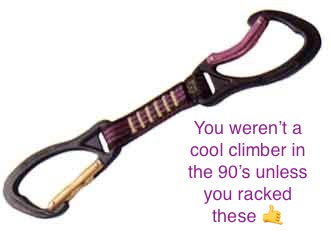The New DMM Ceros Climbing HMS Belay Carabiner - What we've been looking for

We've known about the coming of the DMM Ceros belay biner range for a little while now but it has finally come and we were not disappointed! I just love the fact of how simple carabiners are, yet every year you have a bunch of companies around the world re-inventing the wheel and making little improvements here and there to create that perfect piece of kit.
This is perhaps the best HMS belay style carabiner we've seen yet. There's a lot of this style of biner going round now trying to stop cross loading but the DMM Ceros just seems to nail all the fine points making it super easy to use with no annoying quirks.
Carabiners are strong. Too strong really. But one of their little weaknesses that you need to be aware of is cross loading. Biner's are designed to take the weight along the spine, not against it, so when you're belay biner tunes at a 90 degree angle with force against the gate and the spine - this is the carabiner at its weakest (click HERE to learn more about carabiner strength). Enter about 5 years ago a host of carabiners from lots of manufacturers looking to address the issue by creating ways of captivating the belay loop. These are all great but they all seem to just have their little nuances that make them either tricky to use at first or take half a second more to set up then a standard biner (us climbers like complaining I know). I've used different models like the Black Diamond's Gridlock range, which was pretty good. The Grivel Clepsydra is great as the wire snap divider works perfectly, although you either love or hate the twin gate (you can learn to love it as Simon Alsop has instilled in me). If you can love it the twin gate has a tonne of benefits - least of which is that it is basically always locked even when you're unlocking it so hence always strong. The only little quirk apart from mastering the twin gate is when using a Petzl Gri Gri with it - it just needs half a mil shaved off to slide it on quickly. After a couple months of use this usually sought itself out. The Edelrid FG range is simple, easy and has a bunch of different locking options. The only quirk is that the wire gate isolator goes the opposite way. This just means that it is half a second longer to put on, but comes off super quick. Not too much of an issue but just a little quirk IMO. But now DMM have finally come to the table and have just smoothed out all the issues.
Firstly the belay loop captive method is the easiest to use being a snap wire gate. This also goes in the right direction unlike some others, meaning it automatically clicks in when you put it on your belay loop, and you have to manually take it out. I think this orientation of the captive gate makes it a little bit safer as the belay loop can't accidentally pop out if there's a bit of to-and-fro-ing on it. You'd have to be terribly unlucky for the Edelrid FG's to do this but theoretically it could happen.

The DMM Ceros also has the Rhino horn, a feature borrowed from the Rhino biner (a great biner by the way). This is particularly great for GriGri's but will also work for any tubular, ATC style belay device to stop it sliding onto the spine of the carabiner. Climbers have long been adding little rubber stoppers for this effect but adding the little rhino knob did the same thing and looks/feels much cleaner. It's such a simple solution but the best solutions in design are often that way.

You can also choose between three different gate options (this product is the screw gate version) so you're not limited to one gate option for your belay biner.
Combine all of this with the fact that this carabiner is made by DMM in Wales who make the best biners in the world (yep it's true). Their gate springs seem to last longer, screw and auto-lock gate closure lasts longer, their's no 'gritty' gate sliding and their finishes are beautiful.
There are some awesome carabiner designs that have fallen by the way-side for different reasons. The DMM Mamba was perhaps the best sport climbing biner ever invented. That captive sling meant that thing was always staying in the perfect position for clipping and quickdraw strength. But alas because you needed to re-sew the slings when you wanted to change them, climbers weren't ready for that type of commitment so it didn't sell for too long.

I don't think the Ceros HMS will be like that however, I'll eat my words if proven wrong but I think this one will be around for quite a while.
